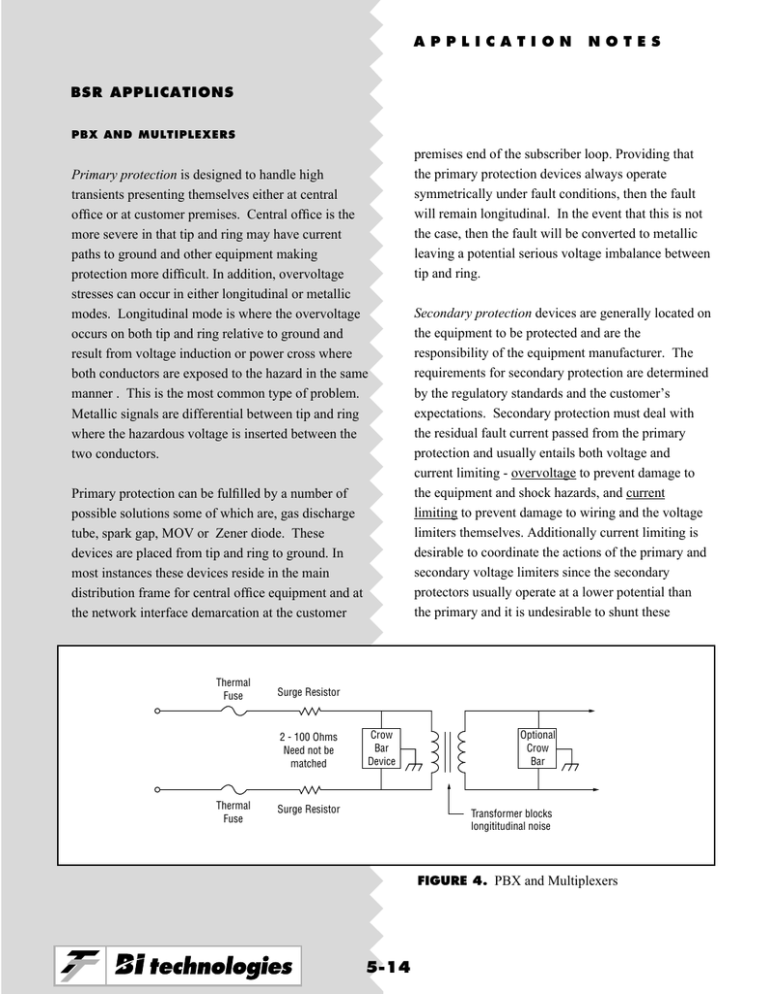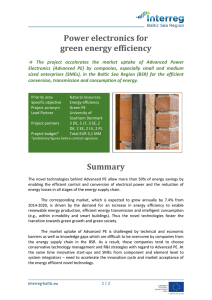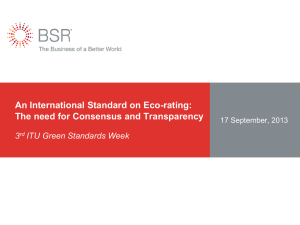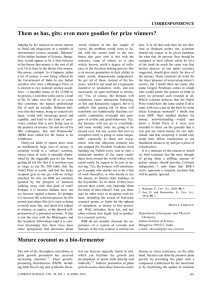Primary protection is designed to handle high
advertisement

APPLICATION NOTES BSR APPLICATIONS PBX AND MULTIPLEXERS Primary protection is designed to handle high transients presenting themselves either at central office or at customer premises. Central office is the more severe in that tip and ring may have current paths to ground and other equipment making protection more difficult. In addition, overvoltage stresses can occur in either longitudinal or metallic modes. Longitudinal mode is where the overvoltage occurs on both tip and ring relative to ground and result from voltage induction or power cross where both conductors are exposed to the hazard in the same manner . This is the most common type of problem. Metallic signals are differential between tip and ring where the hazardous voltage is inserted between the two conductors. Primary protection can be fulfilled by a number of possible solutions some of which are, gas discharge tube, spark gap, MOV or Zener diode. These devices are placed from tip and ring to ground. In most instances these devices reside in the main distribution frame for central office equipment and at the network interface demarcation at the customer Thermal Fuse Secondary protection devices are generally located on the equipment to be protected and are the responsibility of the equipment manufacturer. The requirements for secondary protection are determined by the regulatory standards and the customer’s expectations. Secondary protection must deal with the residual fault current passed from the primary protection and usually entails both voltage and current limiting - overvoltage to prevent damage to the equipment and shock hazards, and current limiting to prevent damage to wiring and the voltage limiters themselves. Additionally current limiting is desirable to coordinate the actions of the primary and secondary voltage limiters since the secondary protectors usually operate at a lower potential than the primary and it is undesirable to shunt these Surge Resistor 2 - 100 Ohms Need not be matched Thermal Fuse premises end of the subscriber loop. Providing that the primary protection devices always operate symmetrically under fault conditions, then the fault will remain longitudinal. In the event that this is not the case, then the fault will be converted to metallic leaving a potential serious voltage imbalance between tip and ring. Crow Bar Device Surge Resistor Optional Crow Bar Transformer blocks longititudinal noise FIGURE 4. PBX and Multiplexers 5-14 APPLICATION NOTES BSR APPLICATIONS may present themselves. Traditionally a pair of matched resistors on a common single-in-line (SIL) substrate have been the solution with the resistors designed to handle specific overvoltages as decreed by ITU and Bellcore. The matching is designed to balance the impedance of both tip and ring to ground so that conversion of longitudinal to metallic currents is attenuated as far as possible. These overvoltages are described in Figure 5. currents away from the primary protection ground. Secondary protection consists of two or more elements, some in series with tip and ring and others shunting across tip and ring. The shunt elements are similar to those used in primary protection and are designed to shunt overvoltage and overcurrent to ground. The series elements may differ between central office and PBX because of the different ways that faults Voltage in Percent of Peak Value 1P 0.9P 5 0.5P 0.1P T0 a b T1 T2 A B Specification Bellcore GR 1089 IEC 801-5 Time µS 10 x 1000 kV 1.0 1.2 x 50 .25 2 x 10 2.5 10 x 700 2.0 Example: 10 x 700 µS wave form definition A: Front Time (T1-T0) = 10µS B: Duration (T2-T0) = 700µS FIGURE 5. Overvoltages 5-15 APPLICATION NOTES BSR APPLICATIONS PBX’s have used the same resistor network but now a more cost effective solution has appeared in the form of a special 2512 size chip resistor which can handle the levels of fault typical in customer premise equipment (CPE) and act as a current limiter or in an extreme case as a fast acting fuse without creating a fire hazard. This low cost surface mount device, BI Series BSR, is now available to central office manufacturers for use in conjunction with a thermal fuse device in series to give an efficient and cost effective solution of voltage and current limiting for overall protection. The SMT and cost effective versatility will lend BSR as an ideal solution in the following applications: TVcc R - Tip TI AND ISDN-U TRANSIENT PROTECTION OF TI LINES Overview: The T1 line interface circuitry has several CMOS IC’s. These IC’s are exposed to harsh transient conditions caused by lightening strikes, ESD and transmission power line faults. The CMOS IC’s are very susceptible to damage from the voltage and current surges. This susceptibility mandates an external transient suppression circuitry. Application: The BSR is used in the T1 application to protect the circuitry from overcurrent during ac power crosses. BI Model BSR 1 R1 R2 T1 Transceiver TWO TYPICAL CIRCUIT IMPLEMENTATIONS - TVS Diodes Thyristors R - Ring R3 BI Model BSR 1 T - Tip T - GND T - Ring FIGURE 6. T1 External Line Protection Circuit 5-16 APPLICATION NOTES BSR APPLICATIONS Application: The BSR is used in the ISDN-U interface application to protect the circuitry from overcurrent during ac power crosses. The BSR is capable of withstanding 250V for 50 microsecond, which is much higher than the operating voltages of the IC’s. In addition to this, the BSR also smooths out the voltage reflections and ringing by matching the characteristic impedance. In some cases engineers use PTC thermistors or thermal fuses. The BSR is capable of withstanding 250V for 50 microsecond, which is much higher than the operating voltages of the IC’s. In addition to this, the BSR smoothes out the voltage reflections and ringing by matching the characteristic impedance. In some cases engineers use PTC thermistors or thermal fuses. ISDN U INTERFACE Overview: The ISDN U- Interface is a two wire connection which usually connects the CPE (Customer Premise Equipment) to the central office. As a result it is subjected to the same harsh transient conditions as the analog switching systems. 5 BI Model BSR 1 Voltage Suppressor Tip Crow Bar Device U Transceiver T1 BI Model BSR 1 Ring FIGURE 7. ISDN U-Interface 5-17




